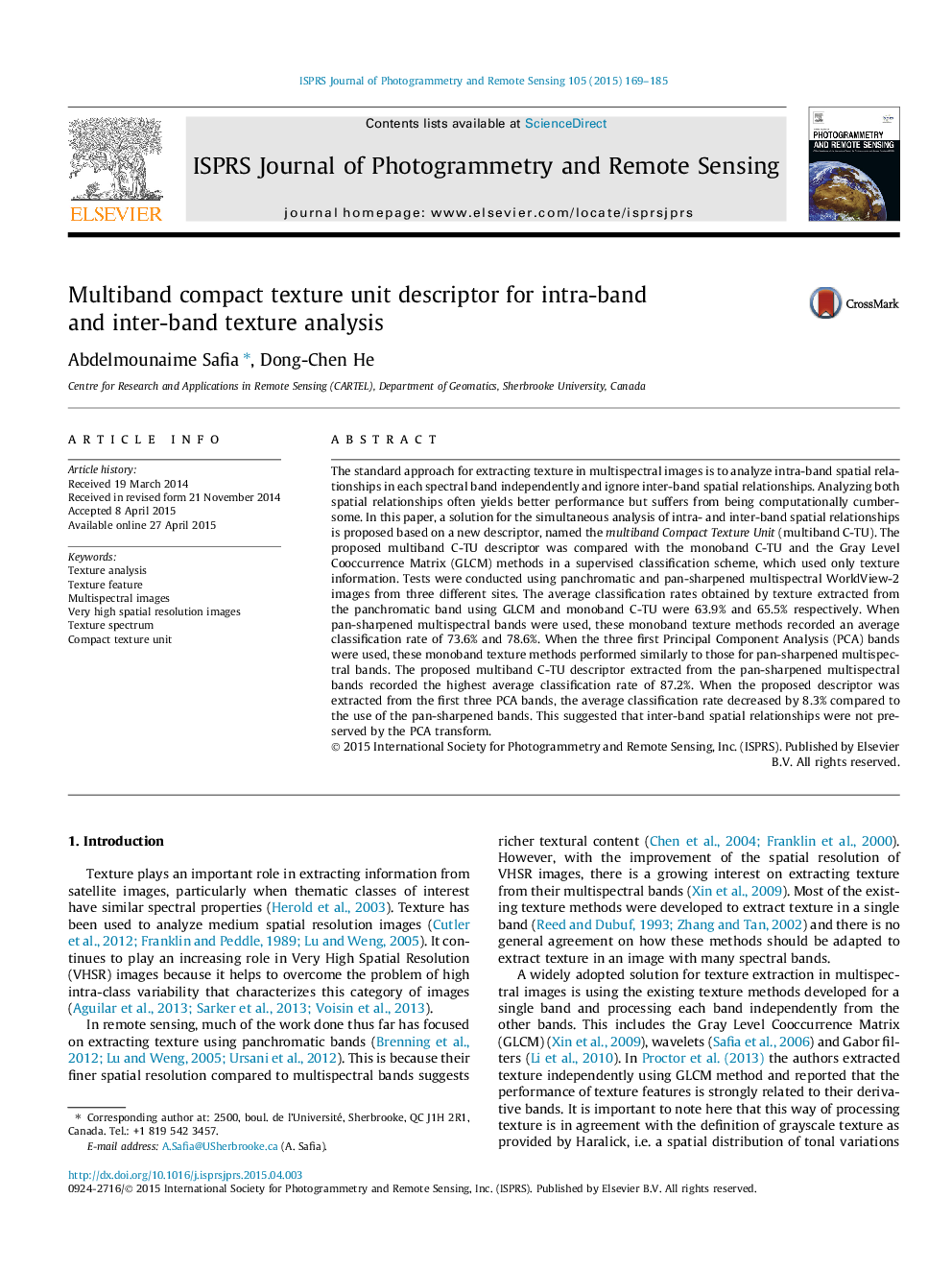| Article ID | Journal | Published Year | Pages | File Type |
|---|---|---|---|---|
| 555962 | ISPRS Journal of Photogrammetry and Remote Sensing | 2015 | 17 Pages |
The standard approach for extracting texture in multispectral images is to analyze intra-band spatial relationships in each spectral band independently and ignore inter-band spatial relationships. Analyzing both spatial relationships often yields better performance but suffers from being computationally cumbersome. In this paper, a solution for the simultaneous analysis of intra- and inter-band spatial relationships is proposed based on a new descriptor, named the multiband Compact Texture Unit (multiband C-TU). The proposed multiband C-TU descriptor was compared with the monoband C-TU and the Gray Level Cooccurrence Matrix (GLCM) methods in a supervised classification scheme, which used only texture information. Tests were conducted using panchromatic and pan-sharpened multispectral WorldView-2 images from three different sites. The average classification rates obtained by texture extracted from the panchromatic band using GLCM and monoband C-TU were 63.9% and 65.5% respectively. When pan-sharpened multispectral bands were used, these monoband texture methods recorded an average classification rate of 73.6% and 78.6%. When the three first Principal Component Analysis (PCA) bands were used, these monoband texture methods performed similarly to those for pan-sharpened multispectral bands. The proposed multiband C-TU descriptor extracted from the pan-sharpened multispectral bands recorded the highest average classification rate of 87.2%. When the proposed descriptor was extracted from the first three PCA bands, the average classification rate decreased by 8.3% compared to the use of the pan-sharpened bands. This suggested that inter-band spatial relationships were not preserved by the PCA transform.
